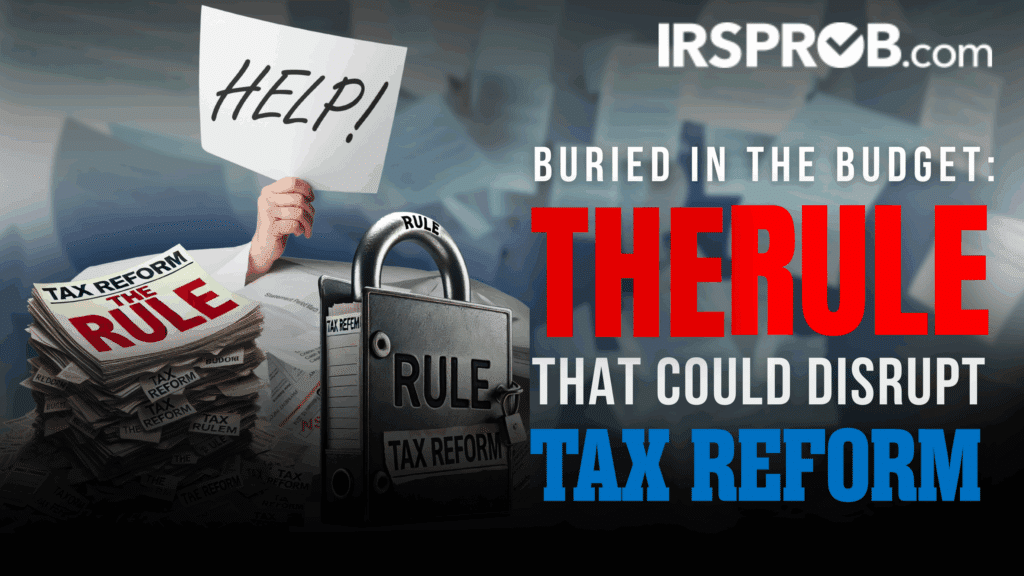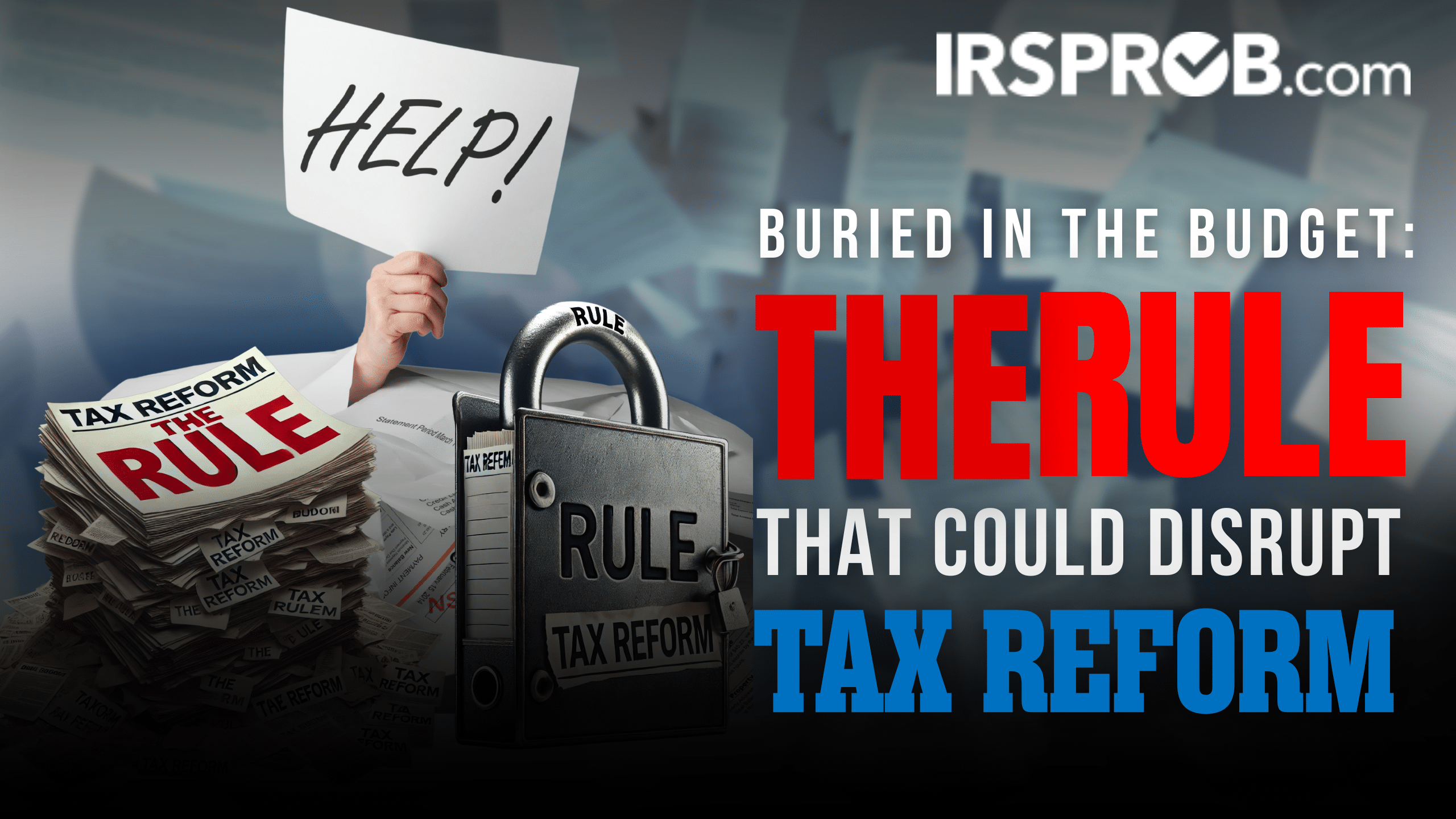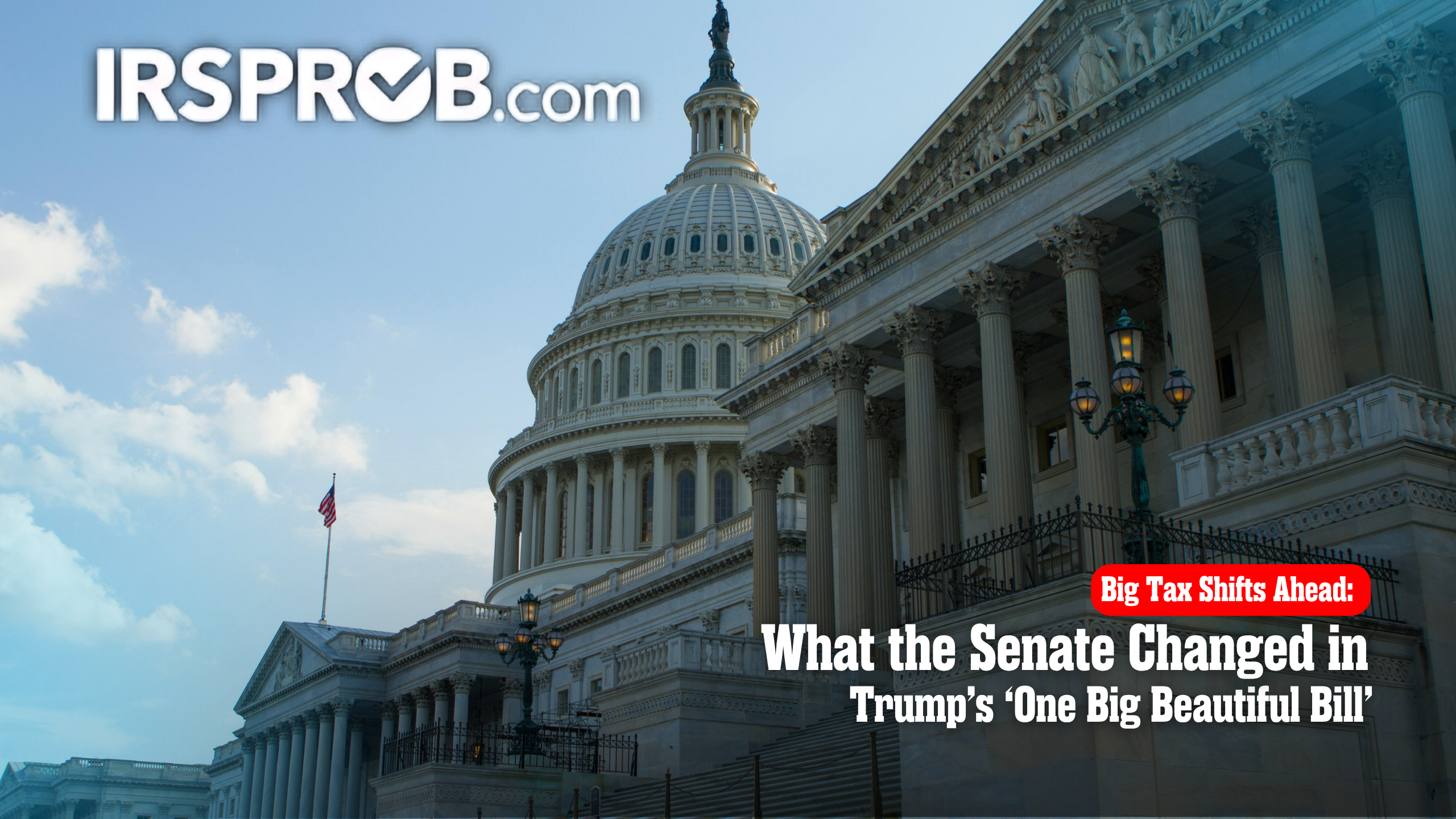Buried in the Budget: The Rule That Could Disrupt Tax Reform

As tax reform negotiations heat up on Capitol Hill, a crucial yet often overlooked hurdle could slow down the process—and it’s not just about dollars and cents. At IRSProb, we’re keeping a close eye on the behind-the-scenes procedures that shape the tax laws impacting every American. One such issue? The Senate’s strategy to extend the Trump-era tax cuts without technically “paying” for them.
The Senate recently passed a key amendment in the ongoing tax reform debate, inching closer to using the reconciliation process to avoid a Senate filibuster. But budget hawks in the House are sounding alarms.
Why? Because the Senate’s version relies on a “current policy baseline”—essentially assuming that existing tax cuts (set to expire) will just continue forever. Under that logic, extending them doesn’t count as adding costs.
House Republicans aren’t buying it. Their version demands a whopping $2 trillion in deficit reductions, while the Senate’s amendment only trims $4 billion. The gap isn’t just wide—it’s a chasm.

The Byrd Rule: The Procedural Trap
Even if lawmakers could agree on the math, there’s a more technical roadblock: the Byrd Rule. Here’s the deal:
To pass tax reform via reconciliation, every part of the bill must impact the federal budget.
But if the Senate assumes current tax policies continue, then extending them doesn’t “change” anything.
No change = no budget effect = violation of the Byrd Rule.
Translation? Every tax provision would need a slight tweak just to look like it’s changing the budget, even if the real-world impact is negligible.

Take the top individual tax rate of 37%. It’s set to expire.
Under a “current policy” mindset, keeping it doesn’t cost anything. But under the Byrd Rule, that’s a no-go—unless lawmakers adjust, say, where the 37% kicks in.
These kinds of tiny changes must be made to every provision. That’s dozens (if not hundreds) of edits, all needing to pass muster with the Senate parliamentarian.
Each change introduces new risks, potential winners and losers among taxpayers, and—most of all—time delays.
For taxpayers and tax professionals alike, here’s the bottom line: Expect more complexity in upcoming tax legislation. Watch for small changes that may have big implications for your bracket or deductions. Plan early, uncertainty could persist longer than expected as lawmakers navigate technical rules and political divides.
While the Byrd Rule might seem like legislative jargon, its ripple effects could shape the taxes you pay and the strategies you use.
At IRSProb, we translate tax policy into plain English—because the better you understand the process, the better you can plan for what’s next.
Let us know: Do you think Congress will manage to pass meaningful tax reform this year? Share your thoughts or questions—we’re here to help.









